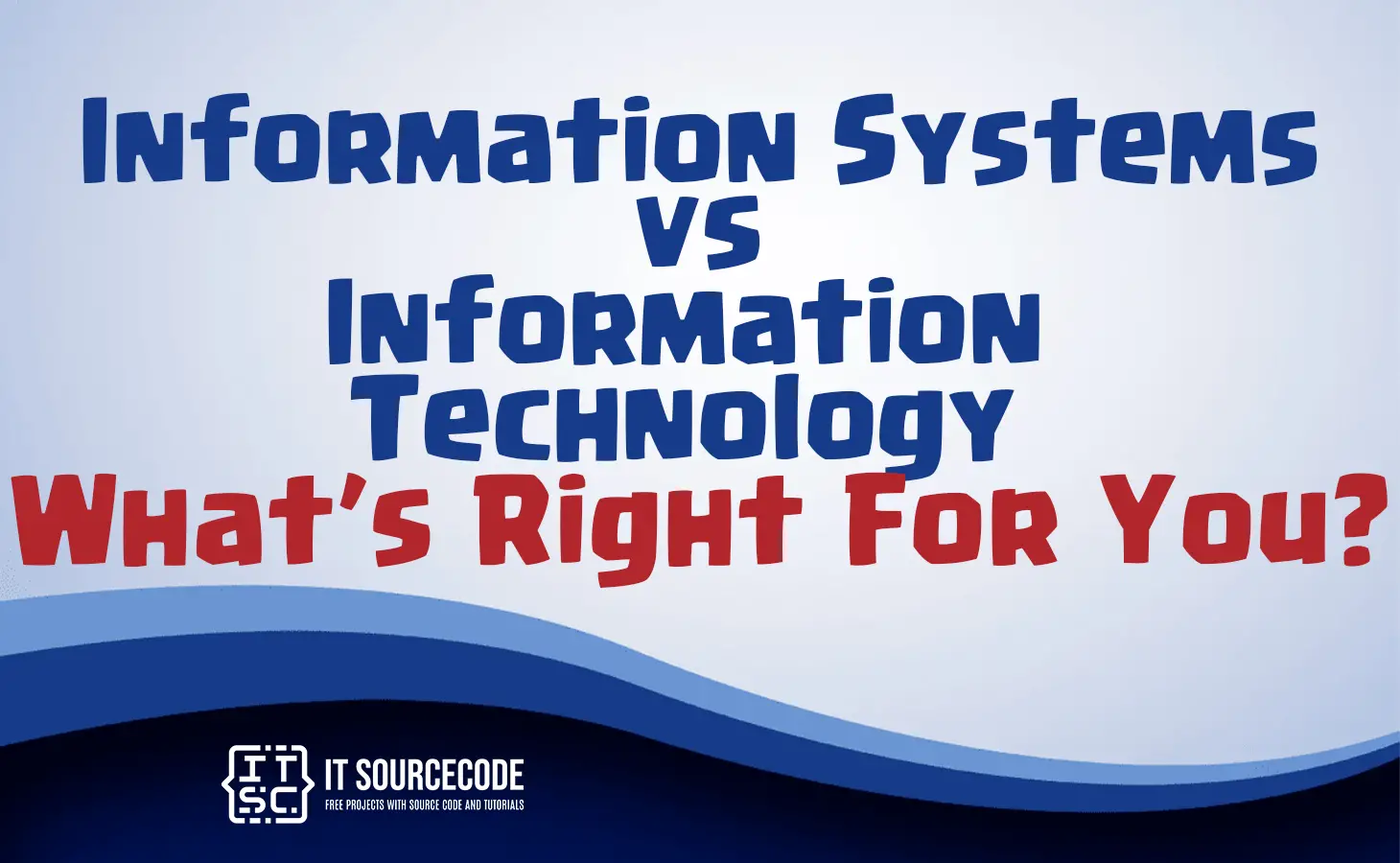INFORMATION SYSTEM VS INFORMATION TECHNOLOGY – The expanding realm of information systems provides diverse career opportunities for tech enthusiasts.
Explore the contrast between information technology and information systems, along with their course offerings and avenues for professional advancement.

What is a Information Systems?
Information systems involve managing data comprehensively, including technology, people, and processes.
Degree coursework ranges from coding to communication, preparing students for both tech strategy and business administration.
This education equips them to implement information systems for internal support in companies and organizations.
What is a Information Technology?
Information technology explores, creates, executes, and supervises computer-based systems. It maintains hardware, software, databases, and networks, guiding users for optimal usage.
An online IT degree fosters analytical thinking and creative problem-solving for business challenges. Domains covered include software, cybersecurity, data security, and project administration.
Information Systems vs Information Technology
The difference between information systems and technology is in their coverage of tech, people, and processes.
Information technology focuses on creating and applying data within the system.
While both involve collaboration, IS roles leverage tech for business goals, while IT emphasizes machinery, hardware, and software systems.
Skills of Information Systems vs Information Technology
Information Systems Skills:
- System Integration: Connect technology, people, and processes into coherent systems.
- Business Analysis: Translate business needs into effective information solutions.
- Project Management: Plan, execute, and oversee projects for successful implementations.
- Database Management: Organize, maintain, and optimize databases for efficient data handling.
- Process Optimization: Streamline workflows using technology for enhanced productivity.
- Communication: Convey complex concepts between technical and non-technical stakeholders.
- Information Security: Protect sensitive data and ensure regulatory compliance.
Information Technology Skills:
- Programming: Code proficiency for software and application development.
- Network Management: Configure, secure, and maintain data networks.
- Hardware Maintenance: Troubleshoot and maintain hardware components.
- Software Development: Create, test, and deploy software solutions.
- Cybersecurity: Safeguard systems, assess risks, and implement security measures.
- Cloud Computing: Understand cloud platforms for scalable data management.
Roles and Responsibilities Information Technology vs Information Systems
Roles and Responsibilities of Information Technology:
- Software Development: Design, code, and test software applications based on user requirements.
- Network Administration: Configure, manage, and secure data networks for efficient communication.
- System Maintenance: Maintain and troubleshoot hardware components, ensuring system functionality.
- Cybersecurity: Implement security measures, conduct risk assessments, and address cyber threats.
- Technical Support: Provide assistance to users, diagnosing and resolving technical issues.
- Database Management: Organize and maintain databases, ensuring data integrity and accessibility.
- Cloud Computing: Utilize cloud platforms for scalable data storage and remote access.
Roles and Responsibilities of Information Systems:
- Business Analysis: Analyze business needs, recommend solutions, and align technology with goals.
- Project Management: Plan, execute, and oversee projects, ensuring successful implementations.
- System Integration: Connect technology components, people, and processes for cohesive systems.
- Database Design: Create and optimize databases to efficiently store and retrieve data.
- Process Improvement: Streamline workflows and procedures using technology to enhance efficiency.
- Stakeholder Communication: Bridge the gap between technical and non-technical stakeholders.
- Information Security: Implement security protocols to protect sensitive data and ensure compliance.
Choosing Your Path: Factors to Consider
Information Technology Courses and Career
Information Technology Courses:
- Computer Organization & Architecture
- Database Systems & Management
Information Technology Career:
- Computer and Information Research Technologist
- Computer Network Architects
- Computer Systems Analysts
- Information Security Analysts
- Software Developers, Applications
- Software Developers, Systems Software
- Web Developers
Information System Courses and Career
Information System Courses:
- Database Management Systems
- Business Law
- Business Systems Analysis
Information System Careers:
- Systems Trainer
- Support Specialist
- eCommerce Developer
- Enterprise Systems Manager
- Information Resource Manager
- Technology Consultant
- Business Analyst
Salary Comparison
Comparing Information Systems and Information Technology salaries shows variations due to roles, experience, and industries.
Information Systems involve business-oriented positions, while Information Technology focuses on technical roles. Considering these factors is vital for understanding compensation differences.
Why do we need Information Technology And System
Information Technology and Systems are vital for modern technology infrastructure. IT facilitates communication, data management, and software development, while Information Systems organize and analyze data for decision-making. They drive innovation, enhance productivity, and support businesses and daily life in the digital era.
Conclusion
To conclude, Information Systems manage data comprehensively, while Information Technology guides computer systems. They have distinct roles: Information Systems focus on business alignment, and Information Technology on technical aspects.

